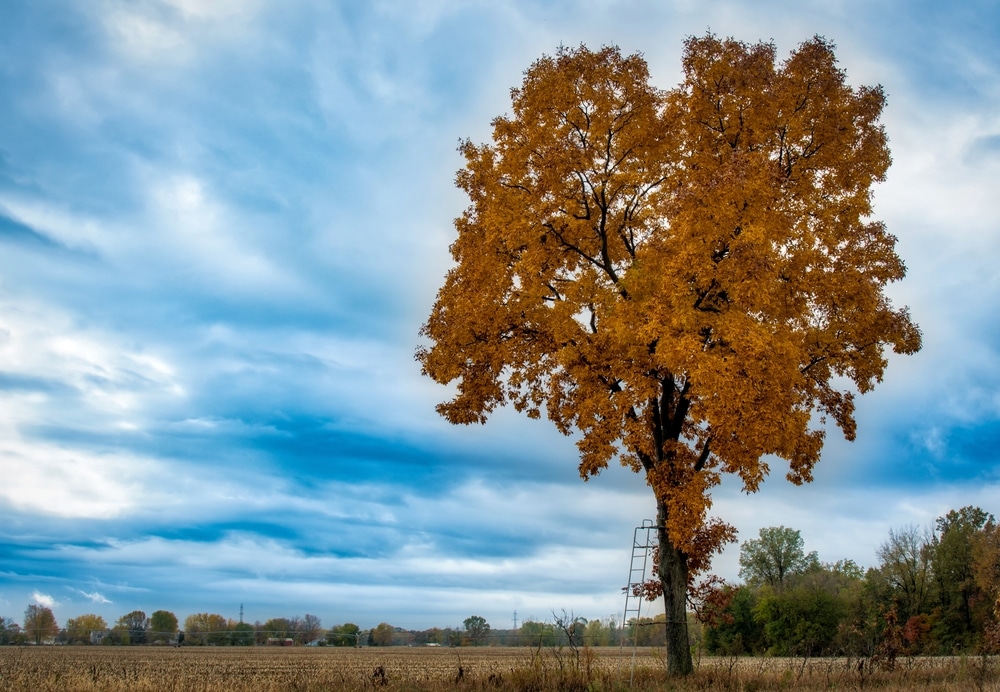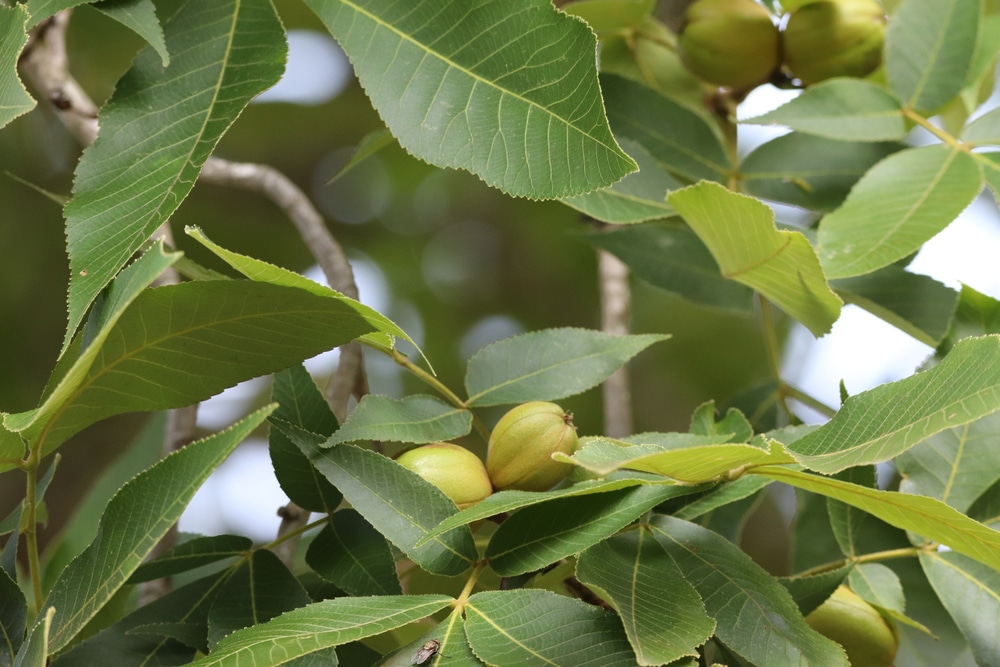There’s nothing like the satisfaction of picking nuts from your backyard. Given how expensive nuts are, your bank account will thank you too.
We’ll give you the low-down on everything you need to know about harvesting and storing hickory nuts.
When To Harvest Hickory Nuts

Hickory nuts are ready to harvest in the fall. You’ll often find these nuts on the ground, especially after strong winds or rain.
If you’re in the heart of hickory nut season and still see a lot of nuts on the tree, we recommend giving the branches a good shake, making sure to stand out of the way from those that fall.
Since hickory nuts are heavy and oily, using a crate or sack to transport them is better than a plastic bag. We also recommend wearing gloves to protect your hands from sticky residue.
How To Tell if Hickory Nuts Are Good
Ripe hickory nuts fall off the tree easily, so this is the first sign that you’ve found a nut ready for harvesting. You should also look for nuts with the following features:
- No boreholes
- No rotten spots
- Small crack
- Brownish-grey husk
Yes, that’s right—a small crack is ideal for telling if a hickory nut is good. Small cracks in ripe hickory nuts are commonplace, making it easier to crack through the thick outer layer and get to the nut.
Tips on Cracking Hickory Nuts
Hickory nuts have a hard, thick outer shell. As a result, it can take some practice opening them, and the amount of force you’ll need to put into it varies according to the hickory tree species.
But as a general rule, using a nutcracker is an excellent option to open hickory nuts. If you have an extra hard species of a hickory nut, such as the shellbark, you may need to use an electric nut cracker.
You can then use a nut pick to remove the delicious nut meat from the shell. It isn’t hard to discern the nut from the shell, as the meat is soft. Make sure not to eat the shell, as it’s so hard it can crack a tooth.
What To Do With Hickory Nut Husks
When you husk the shell of your hickory nuts, we encourage you to leave them scattered around the base of the hickory tree.
Doing so mimics what happens in nature, as the husks are dense in nutrients, providing the tree with a natural fertilizer.
How To Store Your Hickory Nuts
The two best ways to store hickory nuts once you remove the meat is by freezing them or placing them in an airtight container and keeping them in a cool place in your pantry.
Freezing hickory nuts is an excellent option if you have more nuts than you’ll be able to eat within a year; these nuts last for up to a few years when frozen.
Alternatively, like most nuts, hickory nuts have an excellent shelf life. We recommend keeping them in a glass container in a dry, cool environment where you can enjoy them for around one year.
Another option is to store whole hickory nuts without cracking them. These nuts last for several years.
Like shucked hickory nuts, you should store the whole nut in a cool, dry place. Although you can freeze whole hickory nuts, they take up a massive amount of space. So, many people prefer keeping them in five-gallon buckets in their basements.
Then, you can pull out your hickory nuts and crack them in batches for an even fresher nut taste.
The Bottom Line
Hickory nuts are a free, high-protein treat that grows in many backyards in the United States. They’re easy to harvest since they fall on the ground, but husking them takes work.
Nevertheless, hickory nuts have tender meat and a slightly sweet taste, making them a delight for snacking. They also store well for years, so they’re a great nut to eat year-round.
